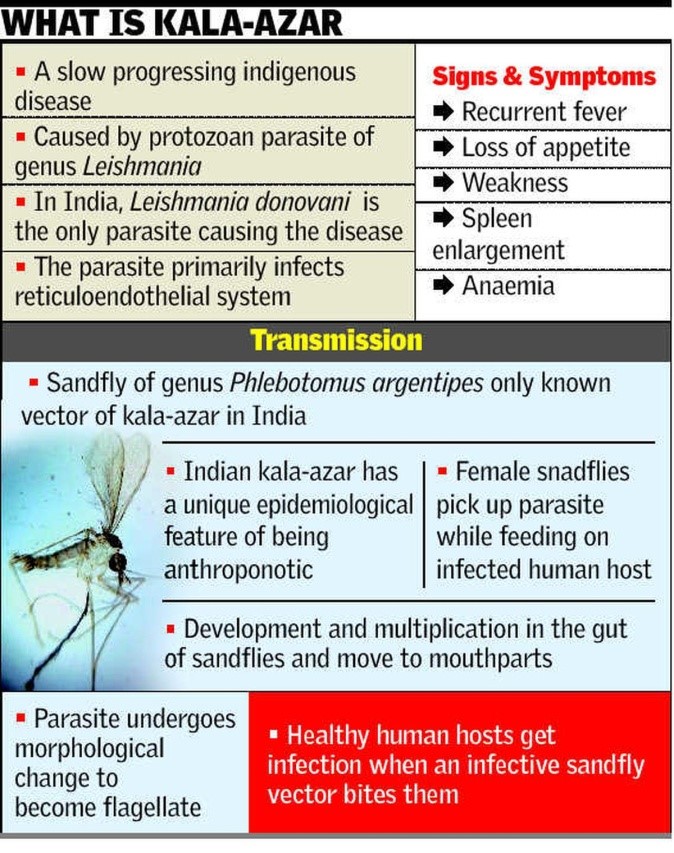Free Courses Sale ends Soon, Get It Now


Free Courses Sale ends Soon, Get It Now



Source: IASGYAN
Disclaimer: Copyright infringement not intended.
Context
Details
Background
Achievement
Government Interventions and Strategies
Challenges
What is Kala Azar (Visceral Leishmaniasis)?
Causes:
Symptoms:
Diagnosis:
Treatment:
Prevention:
Epidemiology:
Post Kala-azar Dermal Leishmaniasis (PKDL):
Conclusion
India's achievement in eliminating kala-azar is a significant milestone in public health. Continued efforts and investments in disease surveillance, vector control, and healthcare infrastructure will be essential to sustain this progress and improve overall public health outcomes in the country.
Sources:
|
PRACTICE QUESTION Q. India has successfully achieved its target to eliminate visceral leishmaniasis, commonly known as kala-azar, according to data from the National Centre for Vector Borne Diseases Control. Discuss the significance of continued efforts and investments in disease surveillance, vector control, and healthcare infrastructure in achieving the target. (250 Words) |
© 2024 iasgyan. All right reserved